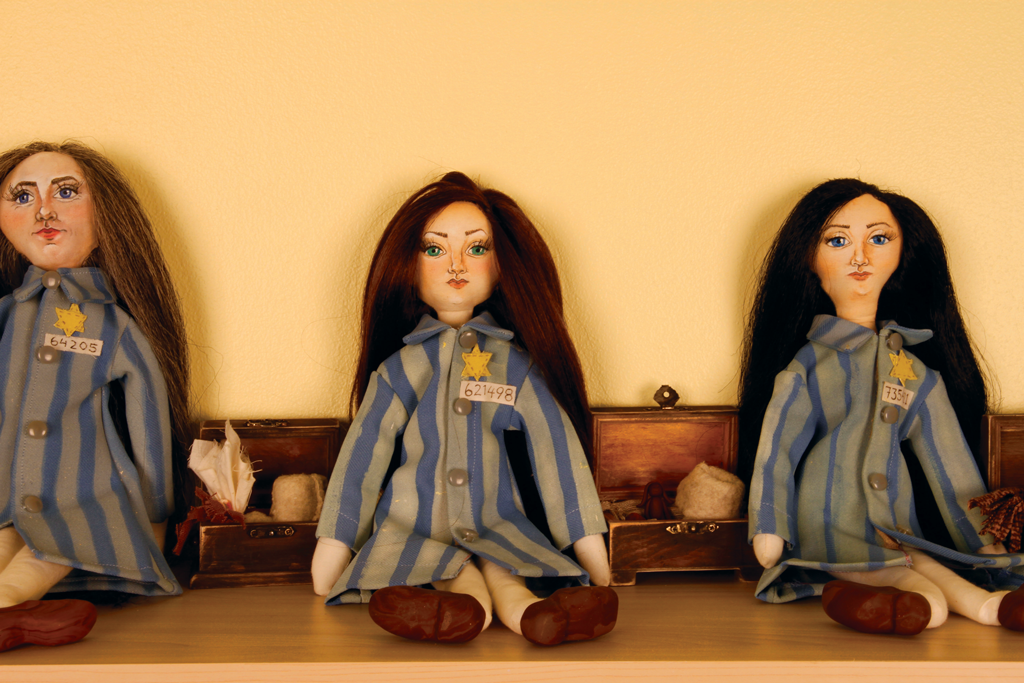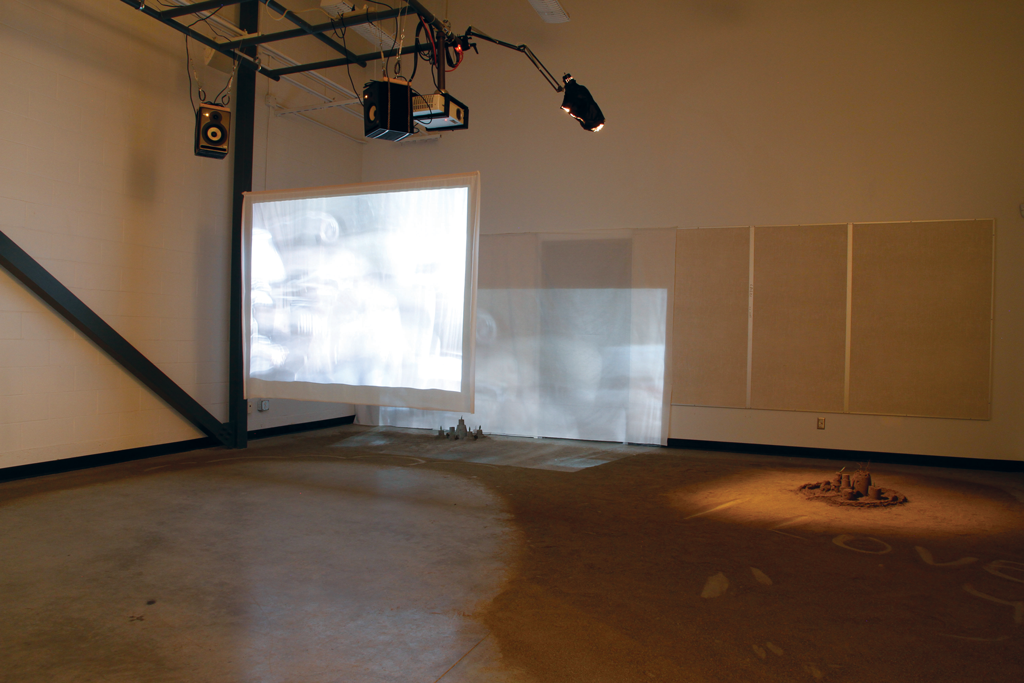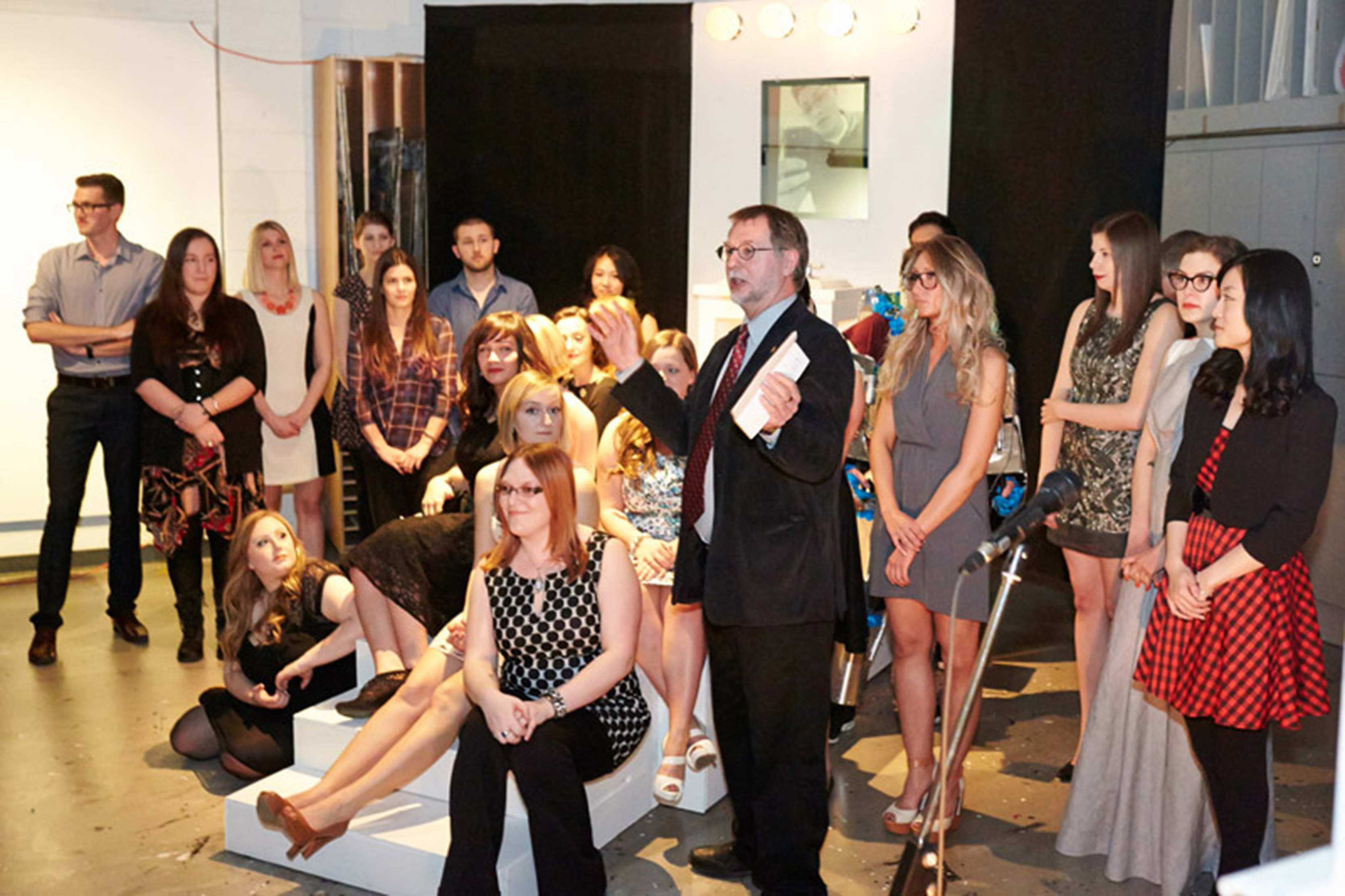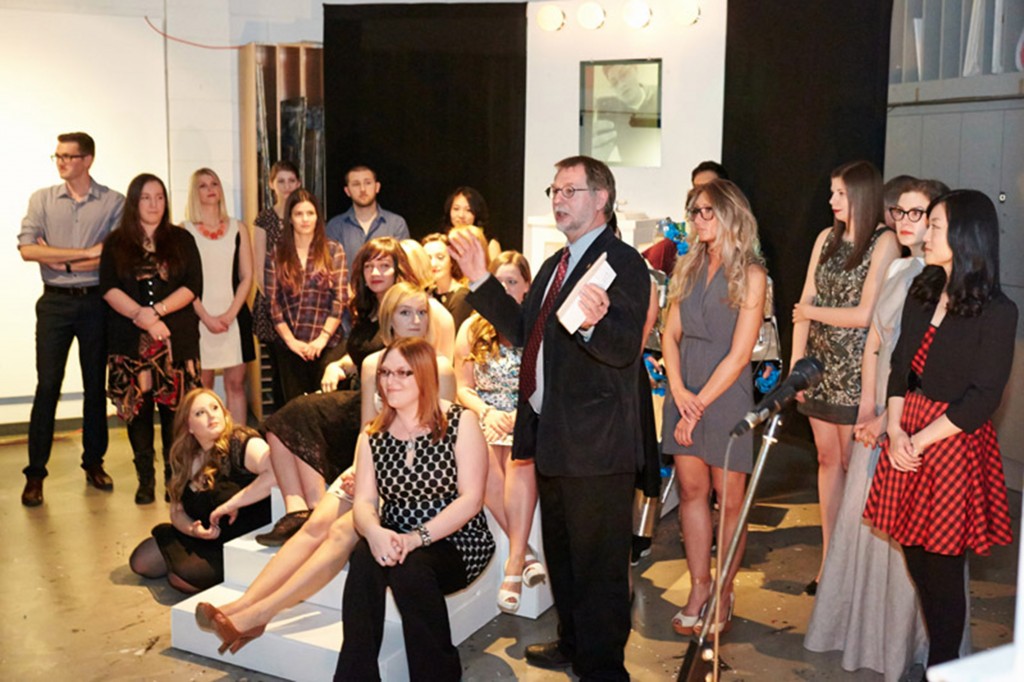By Ashley Mussbacher (The Cascade)
Over the semester break, the Abbotsford campus’ C and B buildings were packed wall-to-wall with students, artists, and supporters who witnessed the opening of the largest BFA Grad Show to date.
It’s been no secret that with a grad class of 23 students, such a large exhibition came at significant cost. Earlier in the year the students launched an online campaign over Facebook which raised just over $1,000 from the community, then hosted a raffle night, which brought in another $600. Through a silent auction, grad students sold their artwork and raised about $3,000. The Student Union Society donated another $3,000, and the visual arts department also sponsored the event. Together the students and community raised money to put on an event that cost about $9,000.
But it was worth every penny. The alumni association provided wine, Restaurant 62 provided catering, and the artists provided a medium for thought.
From social commentary on selfie culture to ideas about memory to questions regarding food production, the 2014 BFA grad show had it all. After opening speeches by President Mark Evered and visual arts department head Tetsuomi Anzai, attendees were free to roam the buildings to observe the installations.
Angie Born’s piece Shame transformed the senior studio into a bedroom complete with laminate flooring, and, of course, bedroom furniture. The comforter featured the word “shame” repeatedly. The piece was a commentary on the gap between the conservative Christian view of sex, which teaches that premarital sex is immoral, and the reality of a person’s sexual experience. Born’s objective is to develop open dialogue on this subject, because, she states, “Open conversation and empathy are antidotes to shame.”

Nieyan Geng addressed the importance of the freedom of speech with her piece Sensitive List, a book of drawings that includes Chinese symbols slightly altered to change a word that has been censored by the government to an entirely different word or phrase.
Ashley Leclair’s piece Render depicts animals in digital formatting and placed in a natural environment. Leclair says in her statement: “We play God; creating, destroying, reintroducing … where animals are nothing but simulations in our technological world.”

Nastasha Mol honoured personal narratives of women who lost their lives in the Holocaust in her piece Learned Compassion. She made dolls by hand, including everything: clothing, wooden suitcases, pieces of their lives, tiny shoes, and even the secrets they kept.
Alisha Deddens’ piece Fragility of Self, a mixed media installation that involved new media and sculpture, is a commentary on the struggle she and her family went through when she had epilepsy.

Overall the show featured a vast amount of skill, sophistication, and teamwork. Deddens explained what it takes to get to this point.
“I think the grad show went really well,” she said. “I heard from people it was one of the best shows UFV has put together. Every artist had something to say about society. The food was great. The atmosphere was great. I was really happy with it.
“Many of us put in over 100 hours into our projects, some of us more than 300,” she said. “We all worked to put the show together; trying to figure out where we were going to have it was the difficult part, because there are so many of us. If someone had an issue, we talked it out. There was no drama. Everyone helped out during the installation process. We teamed up to put it together, and for some of the bigger installations we had two or three people working at once.”



